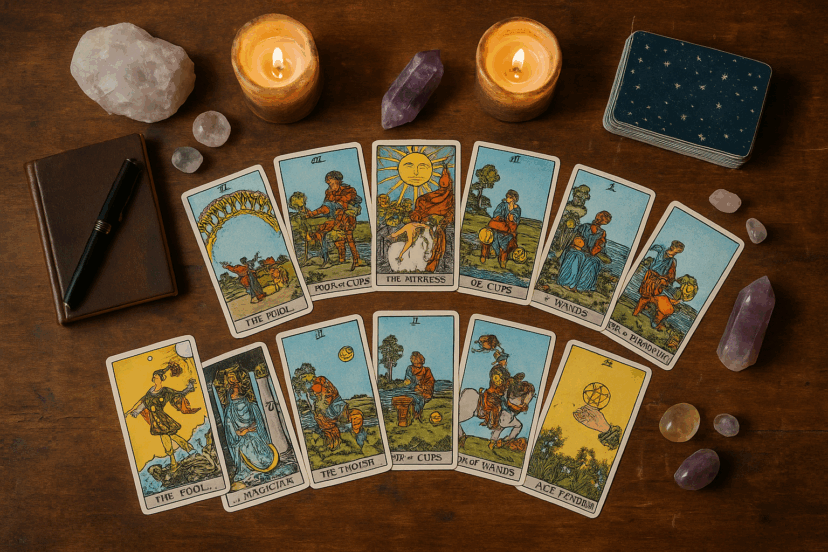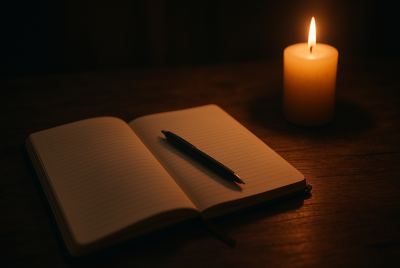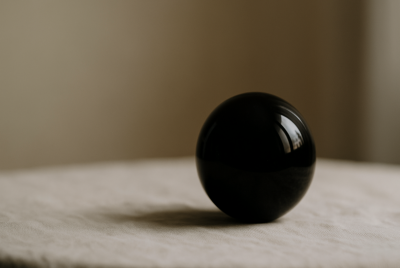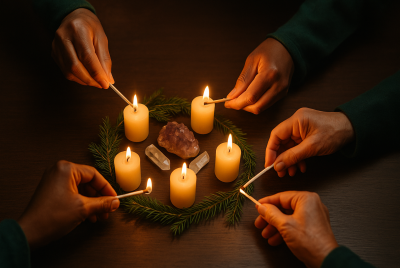A Beginner’s Guide to Tarot Card Reading
We may earn a commission for purchases made using our links. Please see our disclosure to learn more.
Tarot card reading is an ancient art that has fascinated seekers and skeptics alike for centuries. Whether you’re looking for spiritual insight, a new self-care ritual, or just a bit of fun, learning how to read tarot can open doors to greater intuition and self-understanding. In this guide, you’ll discover what tarot card reading is all about, how to get started, and why so many people are drawn to this mysterious yet practical tool for reflection.
Introduction: Tarot Card Reading Unveiled
There’s something magical about shuffling a deck of tarot cards and turning one over, not knowing what wisdom—or surprise—awaits you. However, you don’t need to be a fortune teller to appreciate reading tarot cards. In fact, anyone can learn to use tarot for personal growth, clarity, and decision-making. Many people who explore tarot are also curious about broader spiritual practices. If you’re interested in expanding your understanding, you might find inspiration in the 4 Spiritual Laws, which offer foundational principles for personal and spiritual growth.
What Is Tarot Card Reading?
Tarot card reading is a practice that uses a distinctive deck of cards to explore insights about the past, present, or future. Every card carries its own symbolism and meaning, helping the reader reflect on life’s questions, challenges, and possibilities. Rather than predicting doom or delivering fixed outcomes, tarot encourages you to trust your intuition and view your situation from a new angle.
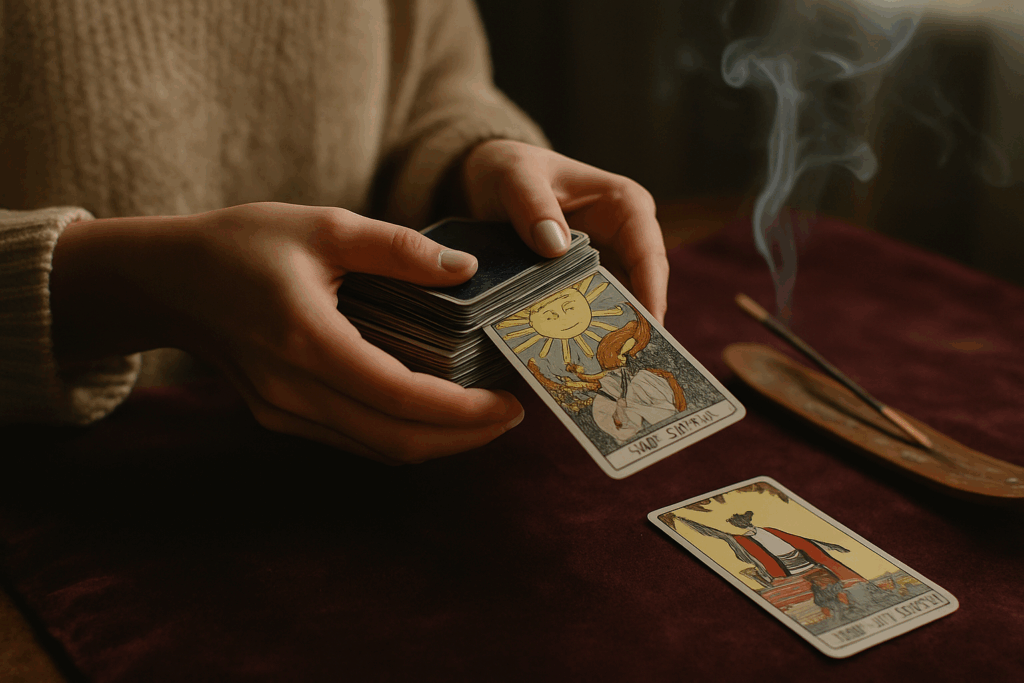
A Brief History of Tarot
Tarot cards initially appeared as playing cards in Europe in the 15th century, at the latest. They gradually evolved into a spiritual tool over time, especially in France and Italy. During the 18th and 19th centuries, the well-known 78-card format—which was separated into the Major and Minor Arcana—became accepted. Decks like the Rider-Waite-Smith made tarot reading more approachable in the early 20th century for those who were interested in psychology, the mystical arts, or self-discovery.
How Do Tarot Cards Work?
A common question is whether tarot cards are psychic or magical. The true power of tarot is found in its ability to help you calm down, think, and pay attention to your inner guidance. Drawing cards exposes you to archetypes, which are universal symbols that stand for typical human emotions and experiences. You can discover fresh perspectives on your circumstances, uncover repressed emotions, or perhaps uncover original solutions you hadn’t thought of by deciphering these symbols.
How to Use a Tarot Deck
The Major Arcana and the Minor Arcana are the two primary groups of the 78 cards that make up a conventional tarot deck.
Major Arcana
The Major Arcana’s 22 cards stand for important life lessons, overarching themes, and spiritual turning points. Cards like The Fool, The Lovers, and The World speak to big-picture experiences—new beginnings, important relationships, transformation, and completion.
Minor Arcana
The remaining 56 cards make up the Minor Arcana, which are divided into four suits: Cups, Pentacles, Swords, and Wands. Each suit covers a different aspect of life—emotions, material concerns, thoughts, and actions. Within each suit, there are numbered cards and four court cards (Page, Knight, Queen, King) that add depth and nuance to your readings.
How to Start Reading Tarot Cards
Learning to read tarot isn’t about memorizing every meaning by heart. It’s more about building a relationship with your cards, trusting your instincts, and practicing regularly. Here’s how to get started:
Choosing Your Deck
Pick a tarot deck that speaks to you. The Rider-Waite-Smith deck is the classic choice for beginners, thanks to its vivid imagery and countless learning resources. However, there are hundreds of unique decks available, so find one that matches your style—artwork matters more than you think!
Creating the Right Atmosphere
Tarot card reading works best when you’re relaxed and focused. Find a quiet spot, light a candle, or play gentle music if it helps you settle in. Some readers like to cleanse their deck by knocking on it, waving incense, or keeping it with crystals, but this is completely personal.
Understanding Card Meanings
Start simple: pick a card each morning and read about its meaning. Most decks come with a guidebook, but don’t be afraid to write down your own impressions. Over time, you’ll notice patterns and develop your unique reading style.
Practicing Simple Tarot Spreads
Begin with a one-card draw for daily insight. Once you feel comfortable, try a classic three-card spread (Past, Present, Future) or the Celtic Cross for more complex questions. Always take a moment to reflect on how each card relates to your question or situation.
What Science Says About Tarot Card Reading
You might wonder whether there’s real science behind tarot card reading, or if its effects are all in the mind. Interestingly, several academic reviews and dissertations have explored this very question, shedding light on how tarot can impact self-reflection and mental well-being.
A comprehensive PhD dissertation by Hofer (2009) found that individuals often turn to tarot during periods of stress, uncertainty, or transition. Rather than predicting the future, tarot readings helped participants reflect on personal challenges, reinforce positive intentions, and develop action plans. The research suggests that the act of shuffling cards and interpreting their symbols offers comfort, clarity, and a deeper sense of control—especially during tough times.
Supporting this, a detailed literature review by Ivtzan (2007) compared paranormal explanations for tarot to psychological ones. The findings strongly favored the psychological side, pointing to phenomena like the Barnum effect—where people find personal meaning in broadly applicable statements—and cold reading techniques as the main drivers behind tarot’s appeal. This means tarot readings can feel incredibly accurate not because of mystical forces, but due to the mind’s tendency to seek patterns and connections.
In short, while science doesn’t confirm tarot as a predictive tool, it does highlight its value as a mirror for self-exploration and growth. Whether you’re facing a crossroads or just want a moment of mindful reflection, tarot can offer genuine support—grounded more in psychology than the supernatural.
Common Misconceptions About Tarot
Myths abound about tarot card reading. Let’s clear a few up:
- Tarot isn’t about telling your future with certainty. It’s a tool for reflection, not prophecy.
- You don’t need to be psychic. Anyone can read tarot with practice and curiosity.
- No card is “bad.” Even cards like Death or The Tower represent transformation and growth, not literal disasters.

The Benefits of Tarot for Self-Discovery
One of the most rewarding aspects of tarot is how it encourages self-reflection. Many people use tarot as a form of journaling, meditation, or creative brainstorming. Studies have shown that reflective practices—like tarot or journaling—can support emotional well-being, reduce stress, and foster personal growth. Tarot can also strengthen your intuition, helping you trust your gut when life feels uncertain.
Recommended Tarot Decks and Accessories
Ready to start your tarot journey? Here are some highly-rated products on Amazon to consider:
- Rider-Waite Tarot Deck
- The Modern Witch Tarot Deck
- Tarot Journal for Beginners
- Velvet Tarot Card Bag
- Crystal Stones Set
Always check current reviews and seller ratings for the best experience!
Conclusion: Embrace Your Tarot Journey
Starting with tarot card reading isn’t about knowing all the answers—it’s about becoming more comfortable with the questions. Every reading is an opportunity for growth, reflection, and connection with yourself. So shuffle the cards, breathe deep, and see where your intuition leads you. Who knows? Perhaps you’ll find the direction you’ve been seeking.
FAQs About Tarot Card Reading
Q1: Can anyone learn to read tarot cards?
Absolutely! With curiosity and practice, anyone can learn to read tarot cards for personal insight or even for friends.
Q2: Do I need to be “psychic” to use tarot?
No special abilities are needed. Tarot helps you tap into your intuition and reflect on your situation from a fresh angle.
Q3: How do I choose my first tarot deck?
Select a deck that features artwork that appeals to you. Many beginners start with the Rider-Waite-Smith deck due to its rich symbolism and learning resources.
Q4: Is tarot card reading safe?
Tarot is a safe tool for self-reflection. It doesn’t summon spirits or control fate—it simply offers insight and perspective.
Q5: How often should I read tarot cards?
As often as you like! Some people pull a card daily, while others do full readings during significant moments or questions.

